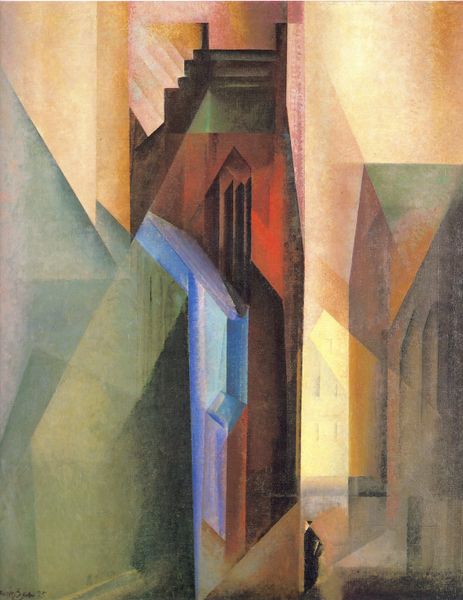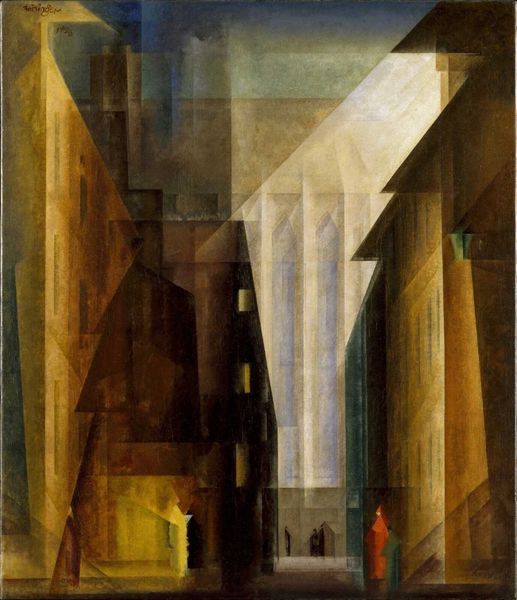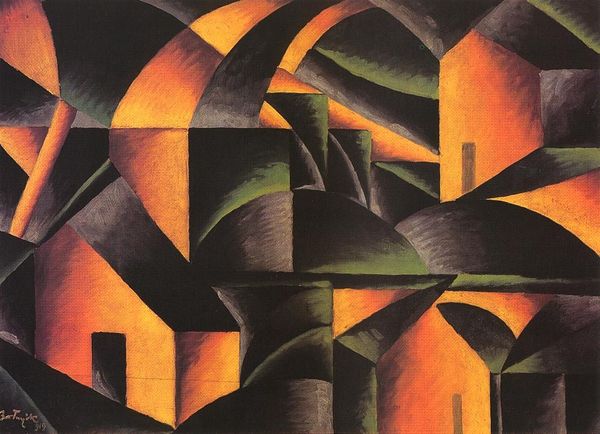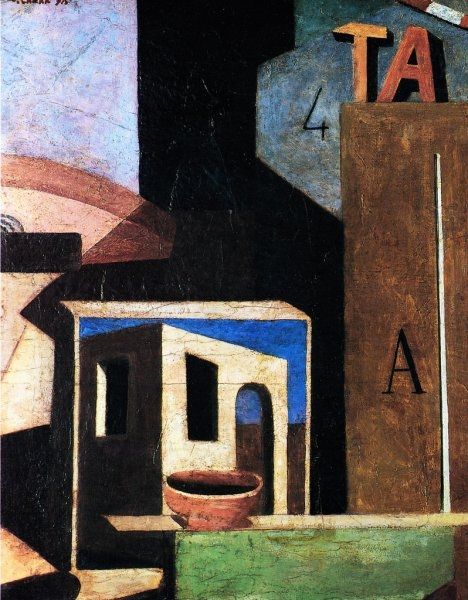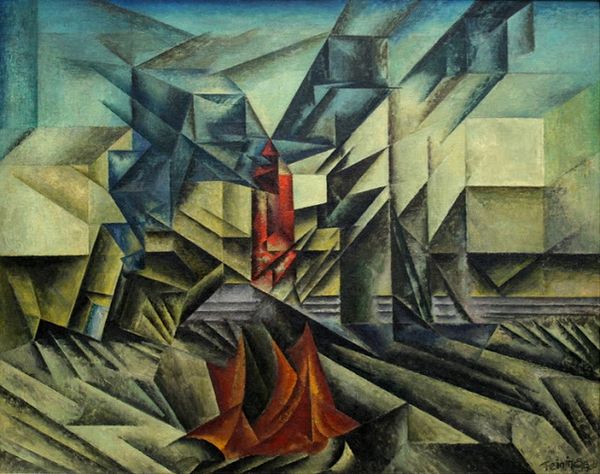
Church of the Minorities in Erfurt I 1924
0:00
0:00
lyonelfeininger
Staatsgalerie Stuttgart, Stuttgart, Germany
oil-paint
#
cubism
#
abstract painting
#
oil-paint
#
oil painting
#
neo expressionist
#
geometric
#
expressionism
#
cityscape
#
expressionist
Dimensions: 99 x 84 cm
Copyright: Lyonel Feininger,Fair Use
Curator: Here we have Lyonel Feininger’s “Church of the Minorities in Erfurt I,” an oil on canvas completed in 1924, currently held at the Staatsgalerie Stuttgart. Editor: Oh, wow, it looks like a city made of sugar glass ready to shatter. So brittle and… slightly ominous, like a silent film about to turn into a suspense thriller. Curator: Ominous is interesting. Feininger was deeply concerned with the spiritual dimension of art, but he also situated himself critically amidst the burgeoning anxieties of modernity, industrialization and its impact on the individual's sense of belonging. Do you think the angularity of the architecture hints at these anxieties? Editor: Definitely. It’s as if the very buildings are leaning in, gossiping, maybe even judging the tiny figures below. It's not just angularity, but how he uses light—those crystalline shafts almost feel judgmental, divine. It’s claustrophobic, despite being a cityscape. Like being in a kaleidoscope reflecting something sinister. Curator: His adoption of Cubist and Expressionist visual languages in this piece serve a dual purpose, formally destabilizing established modes of perception while at the same time creating these affective states, communicating emotional distress, you might say. What do you make of the subdued palette? Editor: That’s what enhances the brittleness for me. It's not dark in the brooding, romantic sense, it’s as though the colors have been washed out, leaving a slightly sour aftertaste. Those pops of yellow and red – figures walking the streets, alone -- they only emphasize the emptiness. Curator: It's as though those figures become beacons of humanity navigating this increasingly dehumanized space. Feininger and his contemporaries witnessed a society grappling with the aftermath of war and rapidly shifting social structures. In what ways, then, can we understand this work as reflecting broader cultural and political realities? Editor: Well, isn’t it all about the fragmentation and distortion echoing the shattered social structures of the time? Maybe he captures that collective trauma, the feeling of everything beautiful cracking under pressure. A visual lament for a world losing its soul. Curator: Absolutely. Looking at it through the lens of early 20th century social and political change really illuminates the emotional weight of the piece. Editor: Right? It’s more than just shapes and colors—it's a visual time capsule. So, that initial feeling? It’s sticking with me. Beautiful, but uneasy. Like holding a piece of history that's both precious and painful.
Comments
No comments
Be the first to comment and join the conversation on the ultimate creative platform.
